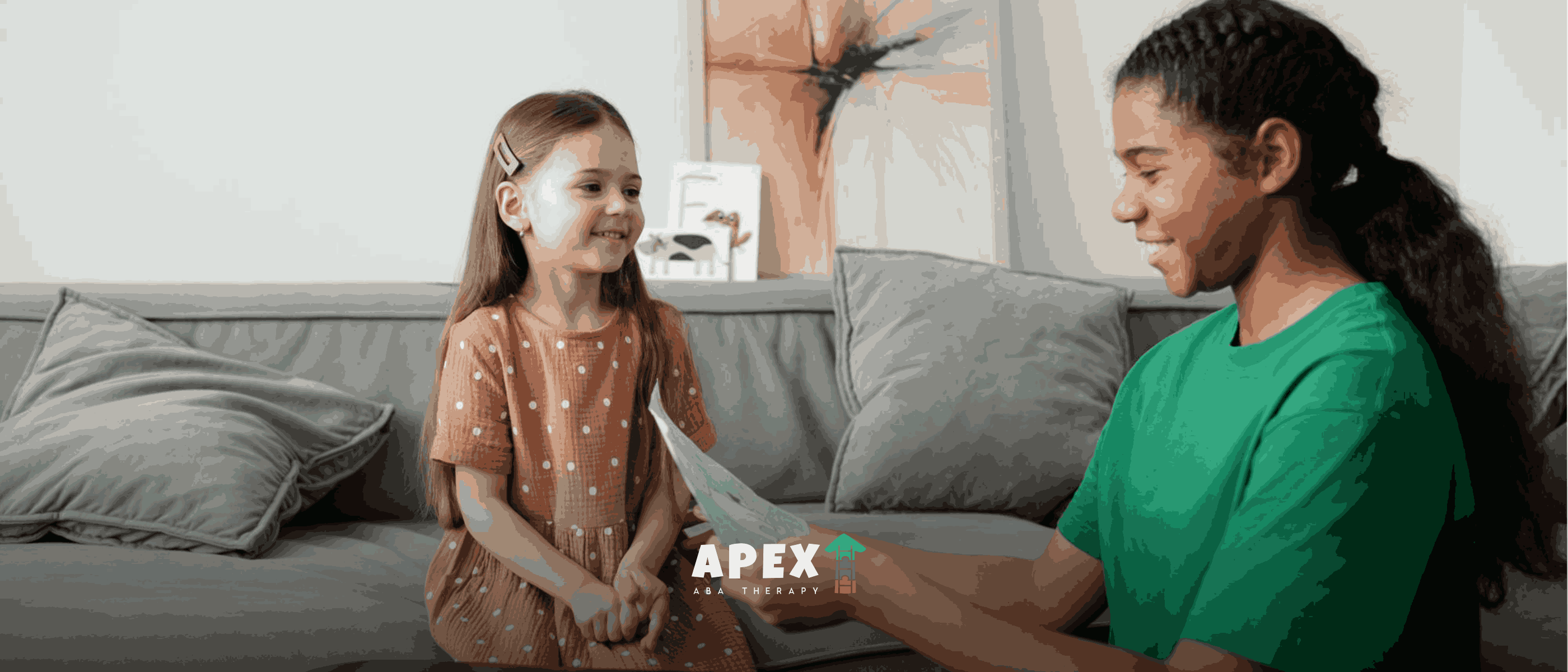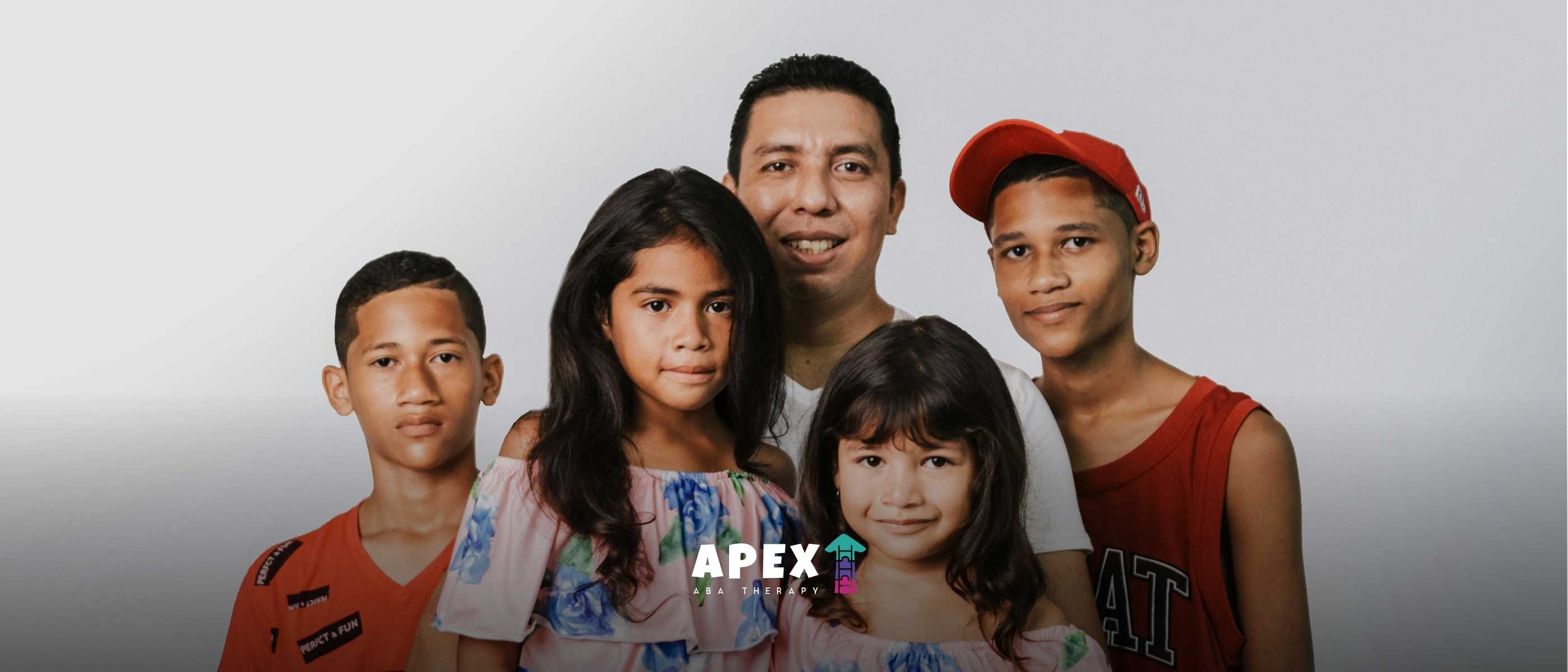Energy-Efficient Autism Community Resources
Harnessing Green Energy for Autism Support: Benefits and Strategies

Energy-Efficient Autism Community Resources
Introduction: Pioneering Sustainable Care for Autism
As the world increasingly turns towards sustainable practices, the intersection between autism support and energy efficiency presents exciting opportunities. By integrating renewable energy and innovative technologies, autism community resources can enhance service delivery, promote environmental responsibility, and support sensory-friendly environments. This article explores the benefits, strategies, and practical tips associated with creating energy-efficient autism community resources, offering insights into how these practices impact the financial and operational landscapes of care facilities and homes.
Innovating Autism Support with Renewable Energy

What are the benefits of integrating renewable energy into autism support services?
Integrating renewable energy into autism support services offers several significant benefits.
Firstly, utilizing renewable energy sources such as solar and wind power can substantially reduce utility costs for families and facilities. This is particularly important in the context of autism care, where average annual expenses can reach around $60,000. By saving between $600 to $1,200 in energy costs annually, funds can be redirected to essential therapies and programs that provide crucial support to individuals with autism.
How does renewable energy enhance care quality?
The environmental advantages of renewable energy directly impact the quality of care provided. For instance, improved air quality from transitioning to clean energy sources significantly reduces exposure to pollutants, benefitting those with respiratory sensitivities. Moreover, renewable energy technologies, like energy-efficient lighting and smart thermostats, help create sensory-friendly environments that are calming and supportive, which is vital for individuals with autism. LED lighting, known for using 75% less energy, can minimize sensory overload that traditional lighting may cause.
What additional advantages do renewable energy solutions offer?
Beyond cost savings and enhanced quality of care, the integration of renewable energy fosters a sense of community engagement. Educational workshops on sustainable practices promote environmental responsibility among autistic individuals and their families, encouraging their involvement in community projects. Furthermore, renewable energy initiatives can help alleviate economic pressures, ensuring better living conditions and thereby positively influencing cognitive and behavioral outcomes.
Ultimately, the strategic implementation of renewable energy in autism support not only addresses economic challenges but also enhances the overall well-being of individuals on the spectrum.
Sensory-Friendly Environments Through Energy Efficiency

How do energy-efficient solutions support autism communities?
Energy-efficient technologies play a vital role in supporting autism communities by significantly reducing operational costs for autism centers. The transition to renewable energy sources, such as solar panels, can lead to electricity savings ranging from 20% to 50%, which often translates to annual savings exceeding $40,000. This cost-effectiveness allows centers to reallocate funds previously dedicated to utilities into essential therapies and services.
Beyond financial benefits, energy-efficient solutions are paramount for improving the quality of care. Cleaner air from these technologies is crucial, especially for individuals with autism who may experience heightened sensitivity to environmental pollutants. Healthier air contributes to better cognitive and behavioral outcomes, fostering a more conducive learning and living environment.
Additionally, energy-efficient lighting systems, like smart lighting, create sensory-friendly environments by minimizing glare and flicker. By controlling brightness and color temperature, these systems can be tailored to meet the specific sensory needs of individuals with autism, which helps mitigate sensory overload—a common challenge.
Creating comfortable environments
An investment in energy-efficient features is an investment in comfort. Features like LED lighting, which uses up to 75% less energy than traditional bulbs, not only lower energy consumption but also provide a calming atmosphere, aiding in emotional regulation and reducing anxiety.
Furthermore, integrating smart home technologies, like smart thermostats and energy management systems, allows for personalized adjustments to indoor environments. These adaptations ensure a consistent climate that can alleviate the stress associated with sudden changes in temperature or noise.
In summary, the integration of energy-efficient solutions not only supports the economic sustainability of autism programs but also cultivates healthier, more comfortable spaces that promote well-being for individuals with autism and their families.
Transforming Facilities and Homes with Energy Efficiency

How can energy efficiency benefit facilities or homes for individuals with autism?
Energy efficiency can significantly enhance environments tailored for individuals with autism by addressing their unique sensory requirements. Effective insulation and advanced thermal regulation systems facilitate stable indoor temperatures. This consistency is essential because fluctuations can often lead to increased anxiety and discomfort for individuals with sensory sensitivities.
Smart technologies play a pivotal role in creating accommodating spaces. Devices such as programmable thermostats and customizable lighting systems enable personalized control over environmental factors. This empowers residents by allowing them to shape their immediate surroundings according to their comfort preferences.
Moreover, employing energy-efficient designs help minimize indoor pollutants through enhanced ventilation systems. Such improvements are crucial not only for comfort but also for health, as many individuals on the autism spectrum are particularly sensitive to environmental toxins that can exacerbate behavioral and cognitive challenges.
From an economic perspective, energy-efficient homes offer substantial savings on utility bills. Families can expect to save anywhere from $600 to $1,200 annually, which significantly alleviates the financial pressures associated with autism care. These savings can then be redirected towards essential services and therapies vital for the individuals’ support and development.
| Benefit | Description | Impact |
|---|---|---|
| Stable Indoor Temperature | Effective insulation and thermal regulation maintain consistent temperatures, reducing sensory overload. | Less anxiety, improved comfort |
| Smart Technology Control | Programmable thermostats and customizable lighting systems allow for personal adjustments, promoting autonomy and comfort. | Enhanced independence |
| Improved Air Quality | Advanced ventilation reduces indoor pollutants, contributing to better health outcomes for individuals with autism. | Greater well-being |
| Economic Savings | Annual utility bill reductions (e.g., $600 - $1,200) enable families to allocate funds to necessary autism therapies and support services. | Financial relief, accessible care |
Community Collaboration: Bridging Autism Care and Sustainability

How can community involvement enhance the link between autism care and energy efficiency?
Community involvement plays a vital role in enhancing the link between autism care and energy efficiency. Initiatives like community solar projects not only reduce financial burdens for families affected by autism but also lead to long-term stability. By adopting renewable energy solutions such as solar panels, families can experience significant savings on their utility bills, allowing them to allocate more funds towards essential therapies and services for their loved ones.
Additionally, renewable energy projects create quieter, low-stimulation environments that are crucial for individuals with autism. Such environments help reduce sensory overload, thereby promoting comfort and emotional regulation. For instance, incorporating green spaces for autism can enhance well-being and provide therapeutic settings where individuals can thrive. Parks and gardens not only stimulate outdoor activity but also foster a sense of calm, integral to supporting mental health in the autism community.
Moreover, involving the community in energy-efficient designs results in communal resources that cater specifically to the sensory needs of autistic individuals. Engaging families in the creation of autism-friendly spaces helps build a robust support network while promoting ecological responsibility. This collaboration not only nurtures a sense of inclusion and belonging but also drives local economic growth by facilitating green practices that benefit the environment overall.
In essence, community collaboration in renewable energy practices bridges the gap between autism care and sustainability, resulting in environments that are both supportive and nurturing for those on the spectrum.
Financial Impacts of Energy-Efficient Practices

What are the financial implications of energy-efficient practices for autism centers?
Energy-efficient practices can provide substantial financial benefits for autism centers by significantly reducing operational costs. For instance, adopting renewable energy sources like solar panels may lead to savings of $20,000 to $30,000 annually on utility bills, allowing funds to be redirected toward vital educational and therapeutic programs. These savings highlight the economic impact of integrating sustainable solutions in autism care facilities.
Implementing smart technologies and energy-efficient lighting can further enhance savings, lowering energy consumption by up to 75%. This not only cuts costs but also creates a more conducive learning environment for individuals with autism, enhancing their overall experience in these centers.
Families facing an average annual expenditure of $60,000 for autism care can directly benefit from these savings as they can reallocate funds towards essential therapies and support services. With the integration of energy-efficient systems, every saved dollar can contribute to improving the quality of care provided.
How do grants and tax credits support financial sustainability?
Moreover, government grants and tax credits play a crucial role in supporting the financial sustainability of autism centers. They can assist facilities in offsetting initial investment costs related to implementing renewable energy solutions and energy-efficient technologies. By reducing upfront expenditures, these financial incentives enable centers to adopt sustainable practices without excessive financial strain.
In summary, energy-efficient practices not only reduce operational costs significantly but also enhance the financial health of autism centers, thereby improving resources available for vital programs directed at supporting individuals on the autism spectrum.
Smart Technologies: Elevating Autism-Friendly Environments
What strategies are effective for combining autism care with energy efficiency?
Effective strategies for merging autism care with energy efficiency focus on the integration of smart technologies. Smart home systems such as smart thermostats and customizable LED lighting are invaluable in creating environments that reduce sensory overload while enhancing comfort. For instance, these technologies allow for tailored lighting options that cater to the sensory preferences of autistic individuals, minimizing disruptions caused by harsh lighting.
Incorporating renewable energy sources, notably solar panels, is another strategy. This approach not only significantly cuts electricity costs by 20-50% but also enables families to redirect these savings toward crucial therapies and support services. By ensuring that living spaces are designed with eco-friendly and non-toxic materials, families can improve air quality—a vital consideration for individuals with autism who may be sensitive to environmental factors.
How do smart technologies enhance well-being in autistic individuals?
Beyond energy savings, practical energy conservation methods such as soundproofing and additional insulation further contribute to crafting autism-friendly environments. Sound-absorbing materials diminish noise, creating tranquil areas for individuals who often experience sensory overload. Improved indoor air quality directly contributes to well-being, fostering a space where cognitive and behavioral outcomes can thrive.
Moreover, financial assistance programs can support families in their pursuit of implementing these energy-efficient solutions. By alleviating some financial burdens associated with autism care, these resources facilitate the creation of environments that are not only supportive but also sustainable—ultimately leading to a higher quality of life for those on the autism spectrum.
Overall, synergizing smart home technologies with autism care enhances both comfort and energy efficiency, promoting healthier living spaces tailored to the unique needs of autistic individuals.
Eco-Friendly Living for Autism Families
Sustainable Home Designs
Creating homes that cater to autism needs often involves sustainable design principles that enhance comfort and well-being. This includes utilizing natural materials, optimizing space for sensory activities, and integrating green spaces, such as gardens and parks. Such settings not only promote relaxation but also provide essential Vitamin D exposure, which is significant for many autistic individuals.
Cost-effective Energy Solutions
Families can significantly reduce their energy expenses while creating supportive environments. Here are some practical tips to make homes more energy-efficient:
- LED Lighting: Transition from traditional bulbs to LED lighting, which uses up to 75% less energy and offers adjustable brightness and color temperatures to reduce sensory overload.
- Energy Star Appliances: Invest in ENERGY STAR-rated appliances to save between $100 and $150 annually while minimizing noise that could disturb sensitive individuals.
- Smart Home Technology: Implement smart thermostats and automated lighting systems that adapt to daily routines, maintaining comfortable temperatures and appropriate lighting settings crucial for individuals with sensory sensitivities.
- Sound-absorbing Materials: Install sound-absorbing materials to create tranquil spaces, which can help reduce anxiety and support emotional regulation.
Environmental Health
By adopting renewable energy sources, families not only save costs but also contribute to a healthier indoor environment. Clean energy solutions significantly improve air quality, which benefits everyone in the household, especially those on the autism spectrum. The reduction of pollutants fosters well-being and enhances cognitive and behavioral outcomes. Therefore, sustainable practices are essential not just for financial relief but also for nurturing a healthy living space for autistic individuals and their families.
Navigating Financial Relief Through Energy Efficiency
How do energy-efficient solutions support autism communities?
Energy-efficient solutions support autism communities by significantly reducing operational costs for autism centers, allowing funds to be redirected toward essential therapies and services.
By integrating renewable energy sources, such as solar panels, centers can achieve savings on electricity bills ranging from 20% to 50%, often exceeding $40,000 annually. This kind of financial relief is especially crucial given the typical annual autism care expenses that may reach around $60,000 per family.
Impact on autism care budgets
The financial advantages of adopting clean energy technologies also enhance the quality of care available to individuals with autism. Energy efficiency improves indoor air quality, which is vital for those sensitive to environmental pollutants. Cleaner air contributes to better cognitive and behavioral outcomes, creating a more conducive learning and living environment.
Moreover, the installation of energy-efficient technologies, like smart lighting systems, is designed to create sensory-friendly environments. These systems can reduce glare and flickering light, both known triggers for sensory overload in autistic individuals.
Financial aid and support
Families and autism centers can access various forms of financial aid and support to ease the transition to energy-efficient solutions. Programs offering grants and tax credits are available for the installation of renewable energy systems, such as solar panels. In addition, many community initiatives focus on providing clean energy assistance, facilitating education on sustainable practices.
A strong support network can significantly assist families in navigating these options, helping them maximize the benefits of energy savings while enhancing the well-being of individuals with autism.
Innovating Community Spaces: Sustainability Meets Sensory Needs
What is the positive impact of eco-friendly practices and technologies on individuals with autism?
Eco-friendly practices and technologies provide substantial benefits for individuals with autism. By integrating renewable energy solutions like solar and wind power, community spaces can be transformed into calming environments that reduce sensory overload. The installation of energy-efficient lighting, such as LED bulbs, consumes significantly less energy while creating softer, more pleasant lighting, essential for sensory-sensitive individuals.
Incorporating green spaces, such as parks and gardens, into autism centers enhances the therapeutic experience, as exposure to nature fosters emotional regulation and boosts mood. Moreover, these amenities serve as disruptive outlets, supporting overall well-being and health. Environmental factors such as improved air quality through clean energy technologies further enhance cognitive functions and behavioral outcomes for individuals on the spectrum.
Additionally, the cost savings associated with renewable energy infrastructure—ranging between 20% to 50%—allow autism facilities to allocate more resources towards essential therapies and educational programs. This reallocation is crucial, as families raising individuals with autism often face high annual expenses, averaging around $60,000.
The implementation of smart technologies within these spaces, such as automated lighting and sound-absorbing materials, creates environments that cater to the unique sensory needs of autistic individuals while promoting energy efficiency. Not only do these solutions contribute to the sustainability of community centers, but they also enhance the overall quality of life for those they serve, highlighting the promising synergy between green technology and autism-friendly spaces.
| Feature/Benefit | Description | Impact on Autism Individuals |
|---|---|---|
| Energy-efficient Lighting | Uses 75% less energy than traditional lighting | Reduces sensory overload, creates calm atmospheres |
| Green Spaces | Parks and gardens for exposure to nature | Enhances mood and emotional regulation |
| Cost Savings | Savings from renewable energy can be redirected | More funds available for therapies and services |
| Smart Technologies | Customizable lighting and noise reduction solutions | Supports routine; reduces anxiety |
Sustainable Energy and Sensory Health Benefits
How can energy efficiency benefit facilities or homes for individuals with autism?
Energy efficiency can greatly benefit facilities or homes for individuals with autism by creating environments that cater to their sensory needs. Improved insulation and thermal regulation help maintain stable indoor temperatures, reducing sensory disruptions and anxiety related to temperature changes.
Additionally, smart technologies, such as programmable thermostats and customizable lighting systems, allow for personalized control of the environment, further enhancing comfort and independence. For example, LED lighting can provide a calming atmosphere while using significantly less energy. These adaptable systems can mitigate visual discomfort and support emotional stability for those with heightened sensitivities.
By minimizing indoor pollutants through effective ventilation systems, energy-efficient designs contribute to healthier living conditions, promoting overall well-being. Cleaner air can lead to improved cognitive and behavioral outcomes for individuals with autism, who often are sensitive to environmental pollutants. In fact, enhancing air quality has been linked to better learning and emotional regulation.
Finally, lower utility bills associated with energy-efficient homes provide financial relief, allowing families to allocate more resources towards autism support services and therapies. Sustainable energy practices also create an inclusive, community-oriented approach, where families can engage in shared initiatives like community solar projects to foster a supportive environment.
Impact of Environmental Initiatives
Renewable energy solutions have demonstrated significant potential not only for economic savings but also for creating therapeutic environments. For instance, autism centers that integrate solar technology have documented reductions in operational costs—these funds can then be redirected to essential therapies and educational support.
Overall, clean energy practices don't just benefit financial aspects; they cultivate sensory-friendly environments that can significantly improve the quality of care for individuals on the autism spectrum.
Empowering Autism Families Through Sustainable Initiatives
What strategies are effective for combining autism care with energy efficiency?
Effective strategies for blending autism care with energy efficiency focus on creating supportive environments tailored to the sensory needs of autistic individuals. Here are prominent solutions:
- Smart Technologies: Utilizing smart thermostats and adjustable LED lighting can create comfortable atmospheres that adjust to individual preferences, reducing sensory overload.
- Renewable Energy Sources: Implementing solar panels, wind turbines, and geothermal systems significantly lowers utility costs. For instance, transitioning to solar energy can lead to savings of up to 50%, which allows families to redirect funds towards essential therapies and support services.
- Environmental Design: Incorporating eco-friendly and non-toxic materials during home design enhances air quality, crucial for those with respiratory sensitivities.
- Energy Conservation Strategies:
- Soundproofing: Integrating noise-reducing materials creates tranquil spaces that can alleviate sensory stress.
- Insulation and Energy-Efficient Lighting: These enhancements reduce energy consumption while fostering a calming environment.
Additionally, financial assistance programs, such as grants for energy-efficient upgrades, provide vital support, easing the financial pressure on families overwhelmed by the annual costs of autism care.
Community engagement benefits
Sustainable initiatives in autism care don't just improve energy efficiency, but they also promote community engagement. Workshops on renewable energy educate families about environmental responsibilities, fostering a culture of sustainability that resonates within the autism community.
- Collaborative Projects: Community solar initiatives offer families the chance to access renewable energy collectively, resulting in shared resources and lower electricity costs.
- Awareness & Participation: Engaging families in sustainability projects encourages them to take part in creating greener practices, enhancing community bonds.
Eco-friendly infrastructure
Eco-friendly infrastructure within autism care centers facilitates the dual benefits of cost-saving and health enhancement. Clean energy systems like solar power generate direct savings—illustrated by success stories such as the Pacific Autism Family Centre, which saved 50% on electricity bills.
- This financial relief can be redirected toward crucial therapies.
- Moreover, improved air quality from renewable energy efforts helps support cognitive and behavioral outcomes for children on the autism spectrum.
Creating these supportive, environmentally-conscious spaces is essential for establishing a nurturing, inclusive atmosphere for autism families.
Conclusion: Paving the Path for Energy-Efficient Autism Support
Integrating energy-efficient solutions and renewable technologies into autism support resources is transformative, not only in reducing costs and improving environmental sustainability but also in enriching the quality of life for those with autism. By prioritizing sensory-friendly designs and economically viable strategies, communities can foster inclusive, supportive, and healthy living environments. As awareness and implementation of eco-friendly practices grow, the potential for positive impacts on autism care and support networks becomes even more significant, providing a roadmap for sustainable development in the autism support landscape.
References
- Renewable Energy for Autism Day Programs - Golden Steps ABA
- Clean Energy Solutions for Autism Families | Discovery ABA
- Eco-friendly energy for autism community centers
- Energy-Efficient Autism Community Resources - Bridge Care ABA
- Turning On the Light: Energy-Efficient Autism Resources Spotlight
- Energy-Efficient Autism Community Support ... - B Above Services
- Green energy solutions for autism support programs
- Autism-Friendly Energy-Saving Tips - Golden Steps ABA
- Energy-Efficient Autism Community Resources - At-Home ABA ...
Frequently Asked Questions

Can a Child Have Autism and Still Talk Normally?
Can a Child Have Autism and Still Talk Normally?

What Are the Red Flags for Autism in a 2-Year-Old?
Autism Red Flags in 2-Year-Old Children | Apex ABA

Is Autism a Lifelong Condition?
Is Autism a Lifelong Condition? Understanding The Journey

What is the Difference Between Autism and Sensory Processing Disorder?
Autism vs Sensory Processing Disorder Differences | Apex ABA

What's the Difference Between Autism and Speech Delay?
Autism vs Speech Delay & Key Differences Explained | Apex

ABA Therapy Enhancing Social Skills: A Key to Improved Communication and Interaction for Children with Autism
How ABA Therapy Helps Children Build Social Skills

Misconceptions About ABA Therapy: Clearing Up the Myths
Common Misconceptions About ABA Therapy |Apex ABA.

Best Age to Start ABA Therapy & What Parents Should Know
Best Age to Begin ABA Therapy for Children | Apex ABA

What’s the Difference Between High-Functioning Autism and Asperger’s?
Difference Between High-Functioning Autism and Asperger’s

ABA Therapy in North Carolina: A Complete Guide for Families
Learn everything about ABA therapy in North Carolina, including services, costs, insurance coverage, and how to choose the best ABA provider in North Carolina.

Life-Changing ABA Therapy Case Studies You Need to Know
Real Success Stories from ABA Therapy Journeys | Apex ABA

What Does It Mean to Be “On the Spectrum”?
What Does It Mean to Be on the Autism Spectrum? | Apex ABA

Is Autism a Mental Illness or a Developmental Disorder?
Mental Illness or Developmental Disorder Explained

Can Children “Outgrow” Autism?
Can Children Outgrow Autism? Understanding the Facts

Is Autism More Common in Boys Than Girls?
Autism in Boys vs Girls: What the Research Reveals

Understanding the Power of Functional Behavior Assessment ABA
Effective ABA Techniques for Behavioral Intervention

Discover How ABA Helps ADHD in Your Child’s Life
How ABA Therapy Helps Children with ADHD | Apex ABA

ABA Therapy vs Preschool: Making the Right Choice Explained
Learn the key differences between ABA therapy and preschool to help you choose the best option for supporting your child’s early learning and development.

Which Personality Type Is Most Likely to Be Autistic?
Which Personality Type Is Most Likely to Be Autistic? | Apex ABA

Why Consistency Matters: What Happens If ABA Therapy Ends Prematurely
What Happens If ABA Therapy Is Stopped Too Early? | Apex ABA

How Can You Gain an Autistic Person’s Attention? Tips for Meaningful Connection
How Can You Gain an Autistic Person’s Attention?

Sensory Sensitivity and Sixth Sense: What Autism Research Shows
Do Autistic People Have Sixth Sense? | Apex ABA

What Happens If Autism Is Left Untreated?
Can Autism Get Worse If Untreated? | Apex ABA

What Not To Do With An Autistic Child: Avoid These 10 Mistakes
What Not To Do With An Autistic Child? | Apex ABA

Coping with Regressive Autism: Tips for Parents
What is Regressive Autism? | Apex ABA

Do Autistic Kids Live with Parents Forever? Here’s the Reality
Do autistic kids live with parents forever? Discover the facts about independence and living arrangements in autism with expert-backed insights.

Red Flags in ABA Therapy: What Parents Must Watch For
What are the red flags in ABA therapy? Learn to identify warning signs for safe, effective autism treatment in this blog.

Can You Go from Level 3 Autism to Level 1? Is It Possible?
Can you go from level 3 autism to level 1? Learn about progress, therapy, and support options with expert help from Apex ABA.

Autism vs Introversion: How to Tell the Difference
Is it autism or just introversion? Learn the key differences and signs with expert insights from Apex ABA.

ABA for Managing Transitions: Tips to Ease Change for Kids
Learn how ABA for managing transitions helps children with autism handle change smoothly.

Understanding the 7 Dimensions of ABA for Better Outcomes
Discover the 7 Dimensions of ABA and how they can lead to better outcomes.

5 Unique Autistic Love Languages You Should Know About
Discover the 5 unique autistic love languages that can enhance your relationships.

Transforming Futures: Improving Lives of Kids with Autism
Discover how innovative strategies are focused on improving lives of kids with autism.

ABA Therapy Techniques for Addressing Repetitive Behaviors in Autism
Harnessing ABA Strategies to Tackle Repetitive Behaviors in Autism

The Role of ABA Therapy in Enhancing Communication Skills
Transforming Communication for Children with Autism Through ABA Therapy

How ABA Therapy Supports Effective Communication in Nonverbal Children
Unlocking Speech Through ABA: Transformative Paths for Nonverbal Children

How to Help Your Child Transfer Skills Learned in ABA Therapy to Real Life
Unlocking Real-World Success for Children in ABA Therapy

How ABA Therapy Helps Children Develop Better Organizational Skills
Empowering Children with ABA Therapy for Enhanced Organizational Skills

The Importance of Creating a Structured Routine in ABA Therapy
How Structured Routines Transform ABA Therapy for Autism

The Role of ABA Therapy in Developing Conflict Resolution Skills
How ABA Therapy Transforms Conflict Resolution Competence

The Importance of Generalization in ABA Therapy for Autism
Unraveling the Role of Generalization in Enhancing ABA Therapy Outcomes

Why ABA Therapy is Crucial for Parents of Children with Autism
The Transformative Impact of ABA Therapy on Families with Autistic Children

How to Involve Parents in the ABA Therapy Process
Maximize Parent Engagement in ABA Therapy for Better Outcomes

What are the Core Principles of ABA Therapy?
Exploring the Cornerstones of Applied Behavior Analysis

Why Communication is Key in ABA Therapy for Autism
The Crucial Role of Communication in ABA Therapy for Autism

Why ABA Therapy Works for Children with Autism Regardless of Severity
Effective ABA Interventions for All Levels of Autism

Why It’s Important to Maintain a Balanced Approach to ABA Therapy
Balancing Effectiveness and Ethics in ABA Therapy

The Role of ABA Therapy in Developing Adaptive Behavior Skills
Exploring How ABA Therapy Transforms Lives

The Benefits of Combining ABA Therapy with Speech Therapy
Maximizing Development with Integrated Therapy Approaches

What to Expect During an ABA Therapy Session
Demystifying ABA Therapy Sessions: A Comprehensive Overview

How ABA Therapy Enhances Cognitive Functioning in Children with Autism
Exploring the Influence of Applied Behavior Analysis on Autism Cognition

How ABA Therapy Helps Children with Autism with Transitions Between Activities
Easing Transitions for Children with Autism: The Role of ABA Therapy

How to Foster Cooperation Between Parents and Therapists in ABA Therapy
Building Effective Partnerships in ABA Therapy

The Role of Positive Reinforcement in ABA Therapy
Exploring the Impact of Positive Reinforcement in Modern ABA Therapy

Why ABA Therapy is Effective for Children of All Ages
Understanding the Reach and Impact of ABA Therapy Across Age Groups

How to Support Your Child’s Emotional Growth with ABA Therapy
Harnessing ABA Therapy for Enhancing Emotional Development in Children with Autism

The Role of ABA Therapy in Enhancing Peer Relationships for Children with Autism
Harnessing ABA Therapy to Boost Social Connections Among Autistic Children

How to Overcome Common Challenges in ABA Therapy
Navigating Hurdles in ABA Therapy: Strategies and Solutions

How to Manage Behavioral Expectations with ABA Therapy
Understanding Applied Behavior Analysis in Behavioral Management

How ABA Therapy Promotes Emotional Regulation in Children with Autism
Unlocking Emotional Balance: ABA Therapy's Role in Autism

How ABA Therapy Improves Social Skills in Children with Autism
Harnessing ABA Therapy to Enhance Social Competency in Autistic Children

The Role of ABA Therapy in Classroom Success for Children with Autism
Harnessing ABA for Academic and Social Growth in Autism

The Importance of Evaluating and Revising ABA Therapy Goals Regularly
Regular Evaluations: The Cornerstone of ABA Therapy Success

How to Choose the Right ABA Therapy Program for Your Child
Finding the Perfect ABA Therapy Fit for Your Child

The Role of Behavior Analysts in Implementing ABA Therapy
Understanding the Vital Contributions of Behavior Analysts in ABA Therapy

The Role of RBTs (Registered Behavior Technicians) in ABA Therapy
A Closer Look at the Essential Work of RBTs in ABA Therapy

What Makes ABA Therapy Effective for Different Learning Styles?
Unraveling the Flexibility and Effectiveness of ABA Therapy

Understanding the Importance of Data Collection in ABA Therapy
The Role of Data in Shaping Effective ABA Therapy

How ABA Therapy Helps with Toilet Training in Children with Autism
Unlocking Independence: ABA's Role in Autism Toilet Training

The Importance of Encouraging Natural Play in ABA Therapy
Revolutionizing ABA Therapy with Natural Play

How to Make the Most of ABA Therapy at Home
Enhancing ABA Therapy Practices Within Your Home

How to Make ABA Therapy Fun and Engaging for Children with Autism
Transforming ABA Therapy into a Fun Learning Journey

The Role of ABA Therapy in Addressing Verbal and Nonverbal Communication in Autism
Enhancing Communication Skills in Autism Through ABA Therapy

Understanding the Role of Family in ABA Therapy for Autism
The Crucial Impact of Family Engagement in Autism Therapy

How to Handle Setbacks and Challenges in ABA Therapy
Navigating Difficulties and Setbacks in ABA Therapy for Children

How ABA Therapy Can Help Children Build Stronger Relationships with Peers
Unpacking the Influence of ABA Therapy on Peer Relationships in Children

Understanding the Concept of Shaping in ABA Therapy
Demystifying Shaping Techniques in Applied Behavior Analysis

How ABA Therapy Enhances Independent Living Skills in Autism
Unlocking Independence: The Role of ABA Therapy in Autism
.jpg)
90+ Reading Statistics, Facts and Demographics
In this article, we will dive into 60 reading statistics that shed light on the importance of reading and its impact on different aspects of life.

How ABA Therapy Can Help Children with Autism Make Better Choices
Unlocking Autistic Children's Potential with ABA Therapy

How ABA Therapy Helps Children with Autism Adapt to New Environments
The Adaptive Benefits of ABA Therapy for Autism

What Does the Research Say About the Effectiveness of ABA Therapy?
Exploring the Role and Research Behind ABA Therapy

How to Create an Effective ABA Therapy Plan for Your Child
Guiding Parents Through Effective ABA Therapy Planning

The Long-Term Benefits of Consistent ABA Therapy for Children with Autism
Unlocking Potential: Consistent ABA Therapy for Autism

Why ABA Therapy Should Be Tailored to Each Child’s Unique Needs
The Necessity of Customizing ABA Therapy for Unique Child Development

What are the Different Types of ABA Therapy?
Exploring the Varieties of ABA Therapy for Autism and Beyond

How ABA Therapy Can Improve Functional Skills in Children with Autism
Unlocking the Potential: ABA Therapy for Autistic Children

How ABA Therapy Facilitates Peer Interaction for Children with Autism
Understanding the Impact of ABA Therapy on Autism and Peer Relationships

The Importance of Early Intervention in Autism Therapy
Unlocking Potential: The Crucial Role of Early Intervention in Autism

The Role of ABA Therapy in Creating Healthy Habits for Children with Autism
Understanding How ABA Therapy Shapes Daily Life for Autistic Children

How to Create a Supportive Environment for Children Undergoing ABA Therapy
Crafting a Nurturing Space for Effective ABA Therapy

The Benefits of Incorporating Technology into ABA Therapy
Harnessing Technology for Enhanced ABA Therapy Outcomes

How ABA Therapy Helps with Stereotypic Behavior in Autism
ABA Therapy: Transforming Stereotypic Behaviors into Meaningful Interactions in Autism

What to Expect in an ABA Therapy Program for Children with Autism
Understanding ABA Therapy for Kids with Autism

How to Create a Positive Home Environment for Children Under ABA Therapy
Cultivating a Therapeutic Space for ABA Success

How ABA Therapy Can Improve Safety Awareness in Children with Autism
Empowering Safety through ABA Therapy for Kids with Autism

The Link Between ABA Therapy and Improved Academic Performance in Children with Autism
Exploring the Profound Impact of ABA on Autism-Related Educational Success

The Benefits of Early ABA Intervention for Toddlers with Autism
Unveiling the Power of ABA for Toddlers with Autism

How ABA Therapy Promotes Independence and Life Skills Development
Unlocking Independence: The Role of ABA Therapy in Life Skills Development

How to Deal with the Emotional Impact of ABA Therapy on Parents
Navigating Emotions: Support Tips for Parents in ABA Therapy



